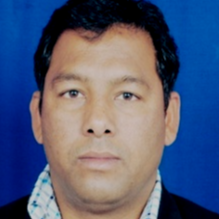International Journal of Computer Network and Information Security (IJCNIS)
IJCNIS Vol. 8, No. 2, 8 Feb. 2016
Cover page and Table of Contents: PDF (size: 402KB)
Dynamic Fair Priority Optimization Task Scheduling Algorithm in Cloud Computing: Concepts and Implementations
Full Text (PDF, 402KB), PP.41-48
Views: 0 Downloads: 0
Author(s)
Index Terms
Cloud computing, priority, scheduling, weighted-fair queue
Abstract
Cloud computing has become buzzword today. It is a digital service where dynamically scalable and virtualized resources are provided as a service over internet. Task scheduling is premier research topic in cloud computing. It is always a challenging task to map variety of complex task on various available heterogenous resources in scalable and efficient way. The very objective of this paper is to dynamically optimize task scheduling at system level as well as user level. This paper relates benefit-fairness algorithm based on weighted-fair Queuing model which is much more efficient than simple priority queuing. In proposed algorithm, we have classified and grouped all tasks as deadline based and minimum cost based constraints and after dynamic optimization, priority of fairness is applied. Here different priority queue (high, mid, low) are implemented in round-robin fashion as per weights assign to them .We recompile the CloudSim and simulate the proposed algorithm and results of this algorithm is compared with sequential task scheduling and simple constraints (cost and deadline) based task scheduling algorithm. The experimental results indicates that proposed algorithm is, not only beneficial to user and service provider, but also provides better efficiency and fairness at priority level, i.e. benefit at system level.
Cite This Paper
Deepika Saxena, R.K. Chauhan, Ramesh Kait, "Dynamic Fair Priority Optimization Task Scheduling Algorithm in Cloud Computing: Concepts and Implementations", International Journal of Computer Network and Information Security(IJCNIS), Vol.8, No.2, pp.41-48, 2016. DOI:10.5815/ijcnis.2016.02.05
Reference
[1]Yogita Chawla and Mansi Bhonsle, “Dynamically optimized cost based task scheduling in Cloud Computing”, International Journal of Emerging Trends & Technology in Computer Science, Volume 2, Issue 3 May-June 2013.
[2]Monika Chaudhary and Sateesh Kumar Peddoju, “A Dynamic Optimization Algorithm for Task Scheduling in Cloud Environment” International Journal of Engeenering Research and Application, Vol 2, Issue 3, May-June 2012.
[3]Qi Cao, Zhi-bo Wei and Wen-Mao Gong, “An optimization algorithm for task scheduling based on activity based costing in cloud computing”, Wuhan University, China 978-1-4244-2902-8/09/$25.00 2009 IEEE.
[4]Hong Sun, Shi-ping Chen, Chen Jin and Kai Guo, “Research and simulation of task scheduling algorithm in cloud computing” University of Shanghai, China, July 25, 2013.
[5]Ram Kumar Sharma and Nagesh, Sharma, “A Dynamic optimization algorithm for task scheduling in cloud computing with resource utilization,”IJSET@2013 volume no.2, Issue no 10, pp: 62-68, year 2013.
[6]Nithiapidary Muthuvelu, Junyang Liu, Nay Lin Soe,Srikumar Venugopal, Anthony Sulistio and Rajkumar Buyya, “A Dynamic job grouping-based scheduling for deploying applications with fine-grained tasks on global grids” The University of Melbourne, Australia ICT building, 111 barry street, carlton VIC 3053,2005.
[7]Herald Kllapi, Eva Sitaridi and Manolis M. Tsangaris, “Schedule optimization for data processing flows on the Cloud”, University of Athens, copyright 2011.
[8]Vandana Choudhary, Saurabh Kacker, Tanupriya Choudhray and Vasudha Vashisht, “An Approach to improve task scheduling in a decentralized cloud computing environment”, IJCTA| jan-feb 2012.
[9]Chandrashekhar S.Pawar and Rajnikant B. Wagh, “Priority based dynamic resource allocation in Cloud computing”, Shirpur, India, 2011.
[10]S.V Parikh et al., “Double Level Priority Based Task Scheduling with Energy Awareness in Cloud Computing”, Journal of Information, Knowledge and Research in Information Technology, ISSN: 0975 – 6698| NOV 12 TO OCT 13 | VOLUME – 02, ISSUE – 02
[11]Dr.V.Vaithiyanathan et al., “An Efficient TPD Scheduling Algorithm for Cloud Environment”, International Journal of Engineering and Technology (IJET), ISSN: 0975-4024, Vol 5 No 3 Jun-Jul 2013.
[12]Rep. UCB/EECS, vol. 28, 2009. J. Geelan, "Twenty-one experts define cloud computing," Cloud Computing Journal, vol. 2009, pp. 1-5, 2009.
[13]R. Mikkilineni and V. Sarathy. (2009). Cloud Computing and the Lessons from the Past in 18th IEEE International Workshop on Enabling Technologies: Infrastructures for Collaborative Enterprises, WETICE'09, 2009.
[14]S. Ma, "A Review on Cloud Computing Development," Journal of Networks, vol. 7, no.2, pp. 305-310, 2012.
[15]P. Mell and T. Grance, "The NIST definition of cloud computing," National Institute of Standards and Technology, vol. 53, no.6, 2009.
[16]I. Foster, Z. Yong, I. Raicu, and S. Lu, "Cloud computing and grid computing 360-degree compared," 2008, pp. 1-10.
[17]CloudComputing[Online]: http://en.wikipedia.org/wiki/ cloud_computing.
[18]A. Fox and R. Griffith, "Above the clouds: A Berkeley view of cloud computing," Dept. Electrical Eng. and Compute. Sciences, University of California, Berkeley.
[19]S. Singh and K. Kant, "Greedy grid scheduling algorithm in dynamic job submission environment," in Emerging Trends in Electrical and Computer Technology (ICETECT), 2011 International Conference on, 2011, pp. 933-936.
[20]R. N. Calheiros, et al., "CloudSim: A novel framework for modeling and simulation of cloud computing infrastructures and services," Arxiv preprint arXiv: 0903.2525, 2009.
[21]C T Lin*1 et al., “Comparative Based Analysis of Scheduling Algorithms for Resource Management in Cloud Computing”, *1 Department of Mechanical Engineering University of California, Davis, California, Vol.-1, Issue-1, July 2013Deborah Estrin, Lewis Girod, Greg Pottie, and Mani Srivastava. Instrumenting the world with wireless sensor networks. In International Conference on Acoustics, Speech, and Signal Processing, 2001.
[22]Gaganpreet Kaur Sehdev, Anil Kumar, "Performance Evaluation of Power Aware VM Consolidation using Live Migration", IJCNIS, vol.7, no.2, pp. 67-76, 2015.DOI: 10.5815/ijcnis.2015.02.08.
[23]Clark, K. Fraser, S. Hand, J. G. Hansen, E. Jul, C. Limpach, I. Pratt, and A. Warfield, "Live migration of virtual machines", Proceedings of the 2nd Symposium on Networked Systems Design and Implementation (NSDI'05), 2005.
[24]Feng-Seng Chu, Kwang-Cheng Chen and Chen-Mou Cheng, "Toward Green Cloud Computing", ACM, 2011.
[25]Sumit Goyal, "Public vs Private vs Hybrid vs Community - Cloud Computing: A Critical Review", IJCNIS, vol.6, no.3, pp.20-29, 2014. DOI: 10.5815/ijcnis.2014.03.03.
[26]Y. Jadeja and K. Modi, "Cloud computing - concepts, architecture and challenges", In Computing, Electronics and Electrical Technologies (ICCEET), pp. 877-880, March 2012.
[27]Bhushan Lal Sahu and Rajesh Tiwari, "A Comprehensive Study on Cloud Computing", International Journal of Advanced Research in Computer Science and Software Engineering, Volume 2, Issue 9, September 2012.
[28]Sarojadevi K and Jeevitha R, "Uncloud the Cloud of Cloud Computing" http://www.caesjournals.org /spluploads/IJCAES-AISC- 2011-174.pdf.
[29]Shengmei Luo, Zhaoji Lin, Xiaohua Chen, Zhuolin Yang and Jianyong Chen "Virtualization security for cloud computing service," International Conference on Cloud and Service Computing, pp.174-179, 2011.
[30]J E Smith and Ravi Nayar, "Introduction to virtual Machines", Elsevier Science, Nov 14, 2004.
[31]Q. Zhang, L. Cheng, and R. Boutaba, "Cloud computing: state-of-the-art and research challenges", Internet Services and Applications-Springer, pp.7-18, 2010.
[32]M. B. Mollah, K. R. Islam, and S. S. Islam "Next generation of computing through cloud computing technology" CCECE, page 1-6, IEEE, 2012.
[33]Shyam Patidar, Dheeraj Rane and Pritesh Jain, "A Survey Paper on Cloud Computing", Second International Conference on Advanced Computing & Communication Technologies- IEEE, 2012.
[34]Rich Lee and B. Jeng, "Load Balancing Tactics in Cloud", International Conference on Cyber-Enabled Distributed Computing and Knowledge Discovery- IEEE, pp. 447 - 454, Oct. 2011.
[35]N. Meghanathan, "A Survey on the Communication Protocols and Security in Cognitive Radio Networks," International Journal of Communication Networks and Information Security, (IJCNIS), vol. 5, no. 1, pp.19-37, April2013.
[36]Pushtikant Malviya and Shailendra Singh, "A Study about Green Computing", International Journal of Advanced Research in Computer Science and Software Engineering, Volume 3, Issue 6, June 2013.
[37]Mrs .Sharmila Shinde, Mrs. Simantini Nalawade, Mr .Ajay Nalawade, "Green Computing: Go Green and Save Energy", International Journal of Advanced Research in Computer Science and Software Engineering, Volume 3, Issue 7, July 2013.
[38]S. Pearson, ―Taking account of privacy when designing cloud computing services, In: IEEE ICSE Workshop on Software Engineering Challenges of Cloud Computing, (pp. 44-52), May 2009.
[39]S. Yu, C. Wang, K. Ren and W. Lou, ―Achieving secure, scalable, and fine-grained data access control in cloud computing, in: Proceedings of IEEE INFOCOM, (pp. 1-9), March 2010.
[40]H. Takabi, J.B. Joshi and G.J. Ahn, ―Security and privacy challenges in cloud computing environments,‖ Security & Privacy, IEEE, 8(6), 24- 31, 2010.
[41]T. Dillon, C. Wu and E. Chang, ―Cloud computing: Issues and challenges, In: Proceedings of IEEE 24th International Conference on Advanced Information Networking and Applications, (pp. 27- 33), April, 2010.
[42]G. Boss, P. Malladi, D. Quan, L. Legregni and H. Hall, ―Cloud computing,‖ IBM white paper, 321, 224-231, 2007.
[43]J.W. Rittinghouse and J.F. Ransome, ―Cloud computing: implementation, management, and security, CRC press, 2009.
[44]W. Kim, ―Cloud Computing: Today and Tomorrow, ‖ Journal of Object Technology, 8(1), 65-72, 2009.
[45]Y. Chen, V. Paxson and R.H. Katz, ―What’s new about cloud computing security, University of California, Berkeley Report No. UCB/EECS-2010-5 January, 20(2010).
[46]D. Durkee, ―Why cloud computing will never be 28 Public vs Private vs Hybrid vs Community - Cloud Computing: A Critical Review Copyright ? 2014 MECS
I.J. Computer Network and Information Security, 2014, 3, 20-29 free. Queue, 8(4), 20, 2010.
[47]D. G. Feng, M. Zhang, Y. Zhang and Z. Xu, ―Study on cloud computing security, Journal of Software, 22(1), 71-83, 2011.
[48]S. Pearson and A. Charlesworth, ― Accountability as a way forward for privacy protection in the cloud, In: Cloud computing (pp. 131-144). Springer Berlin Heidelberg, 2009.
[49]D. Zissis and D. Lekkas, ―Addressing cloud computing security issues, Future Generation Computer Systems, 28(3), 583-592, 2012.
[50]K. Popovic and Z. Hocenski, ―Cloud computing security issues and challenges, In: Proceedings of IEEE 33rd International Convention on MIPRO, (pp. 344-349) May, 2010.
[51]W. Jansen and T. Grance, ―Guidelines on security and privacy in public cloud computing, NIST special publication 800-144, 2011.
[52]S. Srinivasan and R.B. Krishnan, ― Data property analyzer for information storage in cloud, in: Proceedings of IEEE International Conference on Pattern Recognition, Informatics and Medical Engineering (pp. 443-446), February, 2013.
[53]S. Sawhney, H. Puri and H.V. Rietschote, U.S. Patent No. 8, 370, 312. Washington, DC: U.S. Patent and Trademark Office, 2013.


